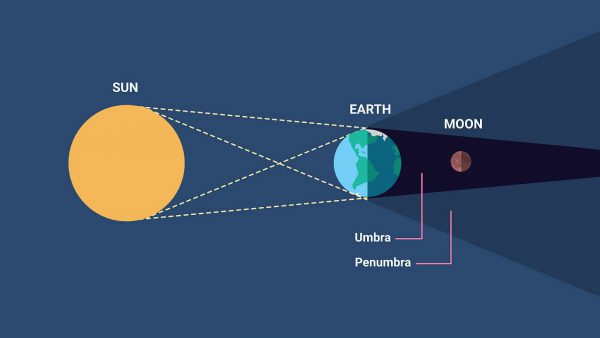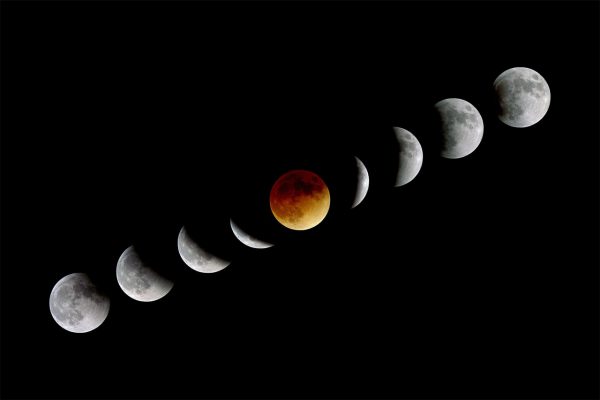Find out how to see 2021's only Total Lunar Eclipse and the last Supermoon for the year

On Wednesday the 26th of May, a glorious site will occur in the afternoon and evening as the Moon will move into Earth’s inner shadow called the Umbra (Latin for shadow) which will cause a Total Lunar Eclipse. It’ll also be a Supermoon where the Moon becomes full on the same day it’s near its closest point to the Earth and it’s the last Supermoon for 2021.
At the start of the Total Lunar Eclipse, the Earth’s outer shadow first darkens the Moon slightly as it moves through it. This outer shadow is called the Penumbra which from the Latin word paene which means “almost, nearly”. The Earth will then move into the Umbra and this is where we start to see the Moon slowly disappear before turning completely orange in colour just as the Umbra completely consumes the Moon. The orange appearance of the Moon is due to Rayleigh scattering where the blue part of the light hitting the Earth’s atmosphere is scattered by the nitrogen molecules and the red and yellow part of the light continues through the atmosphere and goes on to hit the Moon.

|

|
This is the only Total Lunar Eclipse for 2021 and it’ll be viewable for South/East Asia, Australia, New Zealand, much of North America, South America, the Pacific Islands and Antarctica. The eclipse will begin for us in Perth at 4:47 pm (AWST) while the Moon is below the horizon, but don’t worry we’re not missing out on much as the first penumbral phase of the eclipse will happen at this time and it’s hard to notice. The Moon rises above the horizon at 5:16 pm (AWST) about half an hour before the first partial phase begins where the Moon starts to be eaten away. Totality, where the Moon will be orange, begins at 7:11 pm (AWST) and finishes at 7:25 pm (AWST) so it will only be 14 minutes this year. The second partial phase ends at 8:52 pm (AWST) and then the second penumbral phase and the eclipse itself ends at 9:49 pm (AWST). The total duration of this eclipse will be 5 hours, 2 minutes.

Perth Observatory will be having an event for the Total Lunar Eclipse, but it’s now sold out. Don’t worry if you’ve missed out on booking your spots as we’ll be live-streaming the eclipse for timeanddate.com (https://youtu.be/qaCROdt5Hi0).
You also don’t need special equipment to see it, just your eyes and you can see it from outside your home. If you’re a photographer and you want to get some great snaps of the eclipse, there are some great places in Perth like Kaarta Gar-up at King’s Park, Matilda Bay near the University of WA and Mardalup Park at Claisebrook Cover.
Rottnest Island would be a great location to take photos and in the outer suburbs of Perth and Peel region, we’d recommend the Western side of Lake Joondalup Nature Reserve, South Ledge Lookout at Mundaring Weir, Lake Leschenaultia in Childlow, The base of Lesmurdie Falls in the Perth Hills, Serpentine Falls in Serpentine, Point Peron at Rockingham and the Thrombolites at Lake Clifton.
If you’re planning to travel out to the country or live in the country, we recommend going to our friends at Astrotourism WA who have a map of great places to go to take photos of the night sky and/or telescope viewing site.





